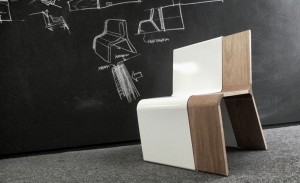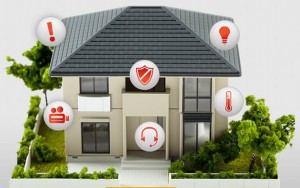By Anca Gagiuc on November 15, 2013 in News
The homes of the future, they say, will be maintained, designed and built using the power of computers.
Climate change, population growth, and geo-political shifts are the main factors in redesigning residential spaces. The U.N. says the world’s population could surpass 10 billion by 2100; this may make us think about sky homes a nd underwater residences. New construction techniques with emphasis on sustainability are gaining ground, and architects advise that we’ll use the sun, the wind and the water to power our future homes.
nd underwater residences. New construction techniques with emphasis on sustainability are gaining ground, and architects advise that we’ll use the sun, the wind and the water to power our future homes.
The home of the future will be an interconnected space, with itself and with its inhabitants. It will be where the afflicted city dweller can find balance, regain energy, and keep a sustainable lifestyle, and it will have to be an adaptive space that changes and grows to fulfill the needs of the people living there.
 The residence of the future will no longer have static rooms, designed for only one type of activity; and its furniture and technology will not serve just one purpose. Functionality of home objects will be multiplied, with many configurations each piece.
The residence of the future will no longer have static rooms, designed for only one type of activity; and its furniture and technology will not serve just one purpose. Functionality of home objects will be multiplied, with many configurations each piece.
Adaptive furniture will play a major role in this vision of the future. Already designers have started proposing ways of hiding the bed in a bedroom studio to make space for a creative studio. Babushka chairs already populate tiny apartments in metro areas where space is a luxury amenity; the same lack of space that forces many metro area inhabitants to sacrifice the full-size dining table also encourages them to purchase something like the Bada table from Brooklyn-based Ecosystems. Stair cases have already been turned into drawers creating storage space in a very elegant manner, and the pop-up office décor won’t let anything in sight when you have visitors over. Trendhunter gathered almost 70 ideas of transforming furniture, reflecting that this is a wide field that awaits to be explored and developed.
Internet will be omnipresent. We’re already familiar with the gigabit home Internet connections – Google, EPB, and Sonic.net have already made a few communities lucky. In addition, groups like the Wireless Gigabit Alliance started working on transitioning gigabit connections to Wi-Fi; Samsung has made public their success in testing the successor of 4G Long Term Evolution, known as the core of the 5G communication system. All of this for a series of devices that communicate seamlessly with each other, creating the space where the resident will never feel bored, lonely or lost.
 Going further with the imagination of researchers, the living room is already the space with the most profound changes. We have Sky+ obeying our viewing habits and the iPlayer that allows everyone in the family to watch what they want, when they want. Internet provides options here also – the devices today pick up what cable companies left behind: Netflix, Hulu, and YouTube on the TV through the Boxee and Roku boxes.
Going further with the imagination of researchers, the living room is already the space with the most profound changes. We have Sky+ obeying our viewing habits and the iPlayer that allows everyone in the family to watch what they want, when they want. Internet provides options here also – the devices today pick up what cable companies left behind: Netflix, Hulu, and YouTube on the TV through the Boxee and Roku boxes.
Game consoles interact with the television set and users of Microsoft Xbox Kinect are already familiar with the idea of speaking or waving at the TV to make it do things. Samsung is working on building similar technology. This will put an end to all those times we’ve been hunting for the remote control, a simple word like ‘pause’ will do the trick. Soon we’ll have the technology that will read our facial expressions and the television will become the main platform for video calls – Samsung 9000 series already includes a retractable high-definition camera.
The kitchen has been the main dike for inventions since early ages. Probably the kitchen of the future will focus on eliminating the task of shopping. LG Electronics has already presented the fridge-freezer that communicates with other devices and retailers, informing them what’s inside. Through a screen on  the door they can even suggest recipes with the ingredients you’ve got in the house. Apps have been developed to take care of the ‘sticky fingers’ problem: the front camera is used to detect movement, thus pages can be turned by waving your hand in front of the device.
the door they can even suggest recipes with the ingredients you’ve got in the house. Apps have been developed to take care of the ‘sticky fingers’ problem: the front camera is used to detect movement, thus pages can be turned by waving your hand in front of the device.
Home security will be of the utmost importance. Cameras in and outside the home integrated with facial recognition software will determine family and friends from strangers. Moreover, when a stranger will ring the doorbell, the system could automatically run the person’s profile against all the faces in the criminal and terrorist databases. If there’s a match the police would be automatically notified and the home locked for security. Sounds like something out of a Jason Bourne movie, but we are just getting started.
Flying homes, floating homes, homes that change shape, they all might sound far-fetched right now, but so did many of the technological devices we nowadays use without a second thought. The most science fiction looking homes have ground in logic and are doable from a construction point of view. It’s just a matter of time until these concepts become needed. How do you picture the home of the future?


